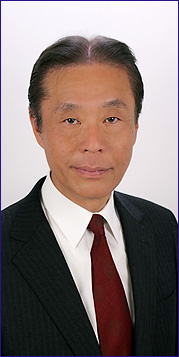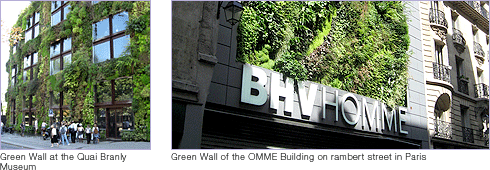

1. Continue to live in a city
Singapore is one of the attractive cities with plenty of greenery where global top companies and branch companies in the IT industry are concentrated. Employees assume their posts in Singapore and reside together with their families. Singapore gives an impression of being a city close to completion as a creative space for realizing intellectual lifestyles. However, regretfully, this is not the case with urban areas in Japan. Foreigners interviewed on the streets regarding what they dislike about Tokyo will often answer that there is less greenery in Tokyo. While Japan followed Europe’s and the United States’ policy toward increasing wealth, military power and rapid economic growth over the course of a 140-year history, Japanese cities have lost their green spaces of large residential, grounds and recreational green spaces. This is not a result of neglecting city planning. Rather, it is due to placing priority on establishing roads, railroads, ports, harbors and factories and designating the development of social infrastructure, which ensure a healthy, safe urban life, as a less important priority. However, the amendment to the City Planning Act in 2000 finally indicated the direction of adding greenery to gray places in cities “to give consideration to formulate a network plan that will pursue the preservation and creation of the natural environment from an ecological perspective.” In order to employ and realize the effects of greenery for improving the environment and reducing environmental load in all areas of urban activities, it is necessary to quantitatively indicate these effects to all people involved with cities in an easy-to-understand manner.2. Qualitative index
Although South-North tension related to the economic value of genetic resources was stressed at the 2010 10th Conference of Parties (COP) to the Convention on Biological Diversity in Nagoya, the Singapore index, which objectively indicates the extent to which cities are giving consideration to biodiversity, also drew attention. During the convention, discussions were carried out with regard to differences caused by city type, strength of the motivation toward environmental improvement and how to evaluate the recovery of greenery in urban areas, thereby declaring the necessity of developing respective cities’ own indices by incorporating city planning perspectives. This means that citizens of respective cities are expected to determine to what extent and what kinds of greenery and nature are desirable.3. Mitigate the heat island effect through greening
A day when the temperature reaches 25ºC or higher is called a “summer day” whereas a day is called a “hot day” when the temperature reaches 30ºC or higher and an “extremely hot day” is when the temperature reaches 35ºC or higher. It is surprising that the number of summer days and hot days has not increased in Tokyo over the last 30 years or so, although extremely hot days have increased threefold. Heat in entire urban areas is caused by heat released from heat-storing substances such as iron and concrete, glass and asphalt, as well as heat emission from automobiles and air conditioning and heat radiation due to indoor ventilation. Heat that you feel on the streets is due to strong heat reflection of the sun due to lack of shade from trees. Since soil and water remove heat from the atmosphere via evaporation, increasing green space effectively mitigates heat. Research revealed that expanding green areas by 1% to the overall Tokyo area would reduce the average temperature in midsummer by approximately 0.5ºC. A power company also estimated that electricity cost can be reduced by 17% for cooling a building when the rooftop area of the building is covered with grass.4. Curb urban flooding through greening
Urban flooding during summer in Tokyo, which is caused by the foehn phenomenon that takes up sea breezes caused by high-rise buildings in coastal areas and torrential rain occurring from cool and humid winds from the east, is overriding the conventional idea of flood control of urban rivers. Since a method is being adopted in Japan to concurrently treat sewage and wastewater, it is essential to avoid the flooding of inland water as well as houses and underground shopping areas. To achieve this, it is effective to increase green spaces that will absorb rainwater into the ground as much as possible and employ a measure to temporarily store water in buildings or facilities. The reason why rooftop greenery is drawing attention is because it becomes a space for storing rainwater and is typically beautiful and spacious with flowers and greenery.5. Intimately connect a diverse range of greenery
We want to protect and expand greenery because it makes people feel good and creates comfortable places. So what kind of green do people consider beautiful and comfortable? There is research that will provide a subjective definition. The development of methods for digitizing feelings of comfort is advancing. For example, there is an experimental, psychology-based method that will express the impression of greenery by using adjectives and indicating the impression in accordance with the strength and weakness of adjectives; the accumulated KJ method that attempts to unveil the fundamental reason that green provides a feeling of relaxation through thorough discussions; a method to comprehend the extent to which a person is feeling comfort by measuring saliva and brain waves, which on the contrary utilizes the relationship of physiological stress that is associated with increased salivary cortisol; and a method that is similar to using the Profile of Mood States (POMS), a psychological test, to measure the status of feeling or emotion.The Laboratory of Landscape Engineering combines these methods to examine various effects and purposes of rooftop greening design. It became clear that people living in respective urban areas aspire to and decide an image of urban greenery. The leading-edge laboratory fuses the humanities and sciences related to plants, biological technology, planning, systems and comfort.Profile
Professor of School of Agriculture specialized in landscape engineeringBorn in 1944 in Tokyo. Graduated from Faculty of Agriculture, Department of Agricultural Biology, the University of Tokyo in 1968, left Ph.D. Course of Graduate School of Agriculture, the University of Tokyo, and became Assistant Professor, Faculty of Agriculture, the University of Tokyo in 1972. Worked as a full-time instructor and Associate Professor at Meiji University School of Agriculture, and was appointed to the present position in 1989.
Scholastic Memberships
Former Chairman of Japanese Institute of Landscape Architecture, Former Chairman of the Japanese Society of Revegetation Technology, Former Chairman of the Japanese Society of Turfgrass Science, Chairman of Natural Environment Coexistence Technology Association, General Manager of Institute of City Parks & Open Space, Vice Chairman of NPO Association of Roof Development and Chairman of NPO Society of School Turf in the 21st Century.Main Research Paper
Effect of Duty by Regulation on Green Roof Promotion. Shanghai World Expo World Green Roof. 23-40.2010Effect of Duty by Regulation on Green Roof. Green Roof for Healthy Cities, CD-Rom 2006









